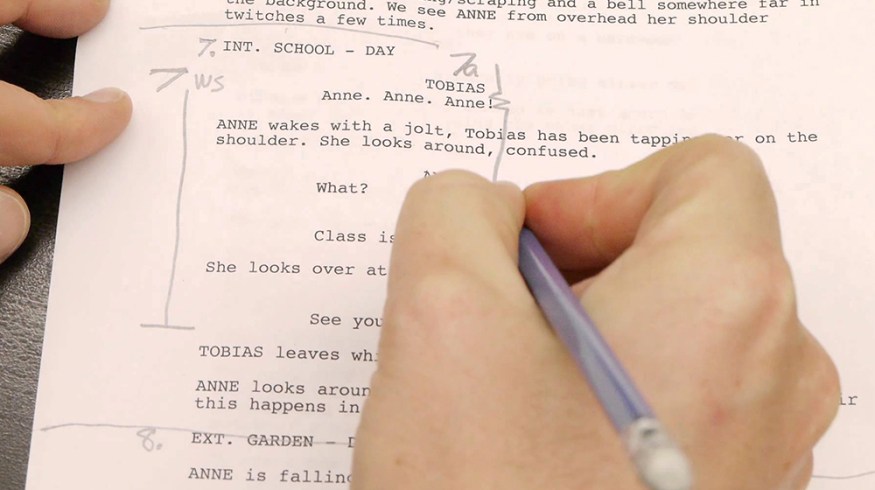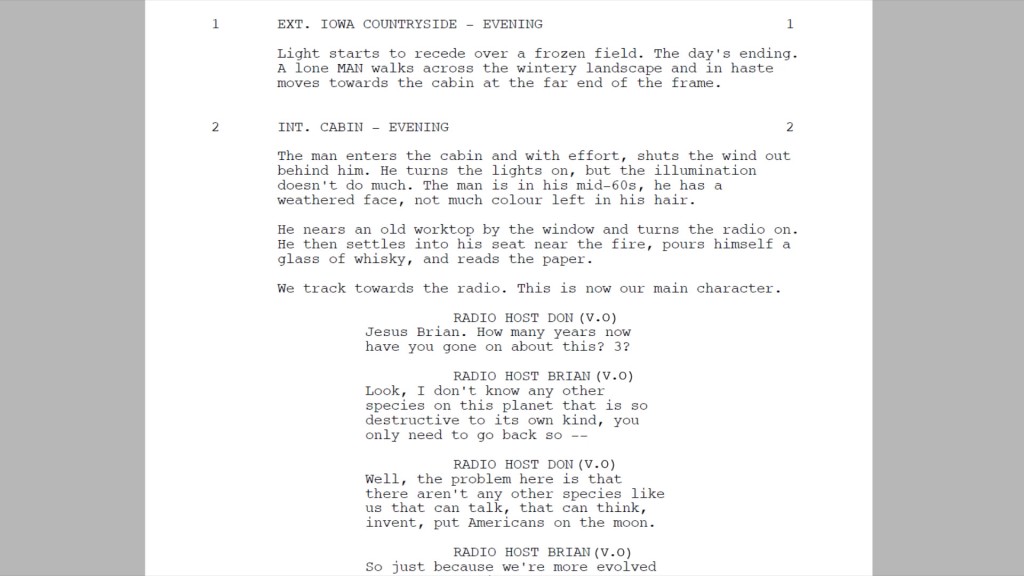
How to Break a Script Down Into a Shot List
There are a few different ways to create a shot list, but what matters most is that you take the time to do it. Here’s one tested method to try next time you break a script down into a shot list.
Top image via Delta Film Academy
Filmmaking procedures will often change from production to production, studio to studio, and from region to region. There isn’t just one way to do something or one word to describe that particular function. Regarding shot lists, I’m sure you could find several different ways to create one.
In the book Script Supervising and Film Continuity, author Pat P. Miller, explains expertly explains the formal process. Yet even Miller says “You may design any format that serves your purpose, so long as the following information is properly recorded…”
Essentially, as long as your production crew is familiar with your format, you’re good to start shooting. First, you need to break down the shots on your script page.

In the example piece above, I’m going to breakdown and visualize the information into different shots. As seen below, you do this with a line which is closed off at the top and the bottom top to signify the end of that shot.
When you do this in your script, it’s best to use a pencil — if you use a pen and change your mind halfway down the page, your script will get messy.

In the marked page above, I have four different lines, each representing a different shot. You may notice that some lines overlap one another, such as shot 2) and shot 2a). This conveys a few things:
- Shot 2) is longer than shot 2a).
- Because the length of 2a) is just a single line, all that’s to be filmed is the information ahead of the marking — turning the radio on.
- In the edit, we would like shot 2a) to play out and then return back to shot 2).
There is a common misconception that the first shot in a scene is called by the scene number and then the letter a. For example, 2a). This is incorrect.
The first shot of a brand new scene is just the scene number on its own — 2). Every proceeding change (lens change, camera position, frame rate change) after the initial shot is when you add a letter.
As a side tip: You can also put a wiggly line next to the character who is speaking but isn’t on camera. This is really more something a script supervisor would do for the editor, but if it’s going to help you distinguish who the camera is on when it comes to typing up your shot list, then use it to your advantage. You need to do this with your entire script. After all that is complete, start to implement this information into a more comprehensive and cleaner shot list.
It’s really up to you how involved you want your shot list to be. It’s going to depend on the size of your production and budget level. Below is a basic shot list that I’ve put together from all the information outlined above.
The primary purpose of the shot list is to help break down the scene into specific steps which will serve as a blueprint — and safety net — to your day of production. There are hundreds of shot list templates you can download for Microsoft Word and Excel. I find the shot list included in the video below (via Delta Film Academy) to be incredibly detailed and helpful.
It goes so far as including the length of the shot on the script page, and the predicted setup time for that shot. It’s ideal for efficiently planning shots. For further reading on the language of the script, I highly recommend the above-mentioned book Script Supervising and Film Continuity by Pat P. Miller. Although the primary purpose of the book is to study the craft of script supervising, it also breaks down a lot of other aspects such as the shooting schedule, how to break down a script, and so on.
Do you have any specific shot list templates you always use? Let us know in the comments.






